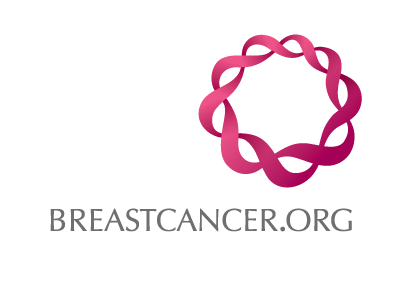- About Us
- Advertise / Support
- Editorial Board
- Contact Us
- CancerNetwork.com
- TargetedOnc.com
- OncLive.com
- OncNursingNews.com
- Terms & Conditions
- Privacy
- Do Not Sell My Information
- Washington My Health My Data
© 2025 MJH Life Sciences™ and CURE - Oncology & Cancer News for Patients & Caregivers. All rights reserved.
Medical Marijuana Use May Aid in Breast Cancer Symptom Management

Darlene Dobkowski, Managing Editor for CURE® magazine, has been with the team since October 2020 and has covered health care in other specialties before joining MJH Life Sciences. She graduated from Emerson College with a Master’s degree in print and multimedia journalism. In her free time, she enjoys buying stuff she doesn’t need from flea markets, taking her dog everywhere and scoffing at decaf.
Patients with breast cancer are turning to medical marijuana to manage symptoms of their disease and treatment, although conversation with health care teams are not occurring as often.
Responses from a recent survey demonstrated that 42% of people with breast cancer reported using medical marijuana to address symptoms related to the disease including pain, insomnia, anxiety/stress, and nausea/vomiting.
In addition, most patients reported using medical cannabis during treatment despite the risk for side effects, according to the study published in Cancer.
Dr. Marisa C. Weiss, founder and chief medical officer of Breastcancer.org, and director of breast radiation oncology and breast health outreach at Lankenau Medical Center in Wynnewood, Pennsylvania, and her team conducted this survey to learn more about what patients with breast cancer, particularly their interest in medical cannabis for symptom management, sources of information they refer to and whether they spoke with their health care professionals before using, among other topics.
“While people are actively under treatment, you want to make sure that all the things that they’re doing are helpful or at least harmless, but not harmful,” Weiss told CURE®. “It became clear over time, while taking care of cancer patients, that many of them were utilizing the increasing number of medical cannabis programs across the country.”
According to the National Conference of State Legislatures, 36 states, the District of Columbia, Puerto Rico, Guam and the U.S. Virgin Islands have approved publicly available medical marijuana programs. Many of these states include cancer as a main qualifying condition to obtain access to medical marijuana. Even though cancer is included in the list of accepted conditions, there should be some caution on its use based on the cancer treatment a patient is using, Weiss said.
“It's not good to be using multiple medications that are broken down by the same part of the liver,” she said. “It might be an overload to the liver, it may affect the liver function. You don't want to use things that have overlapping toxicity. For example, smoking or inhaling medical cannabis could make it more likely for you to develop a side effect of targeted chemotherapies (called) interstitial lung disease.”
Seeking Solutions for Breast Cancer Symptoms
The study conducted by Weiss and her colleagues consisted of 612 patients with breast cancer, of whom 42% reported using medical cannabis to relieve symptoms including insomnia (70%), pain (78%), stress (51%), anxiety (57%) and nausea/vomiting (46%). Additionally, 79% of patients reported medical cannabis use during treatment including radiation, systemic therapies and surgery.
“The whole (cancer) experience is difficult, with uncertainty and disruption of your life,” Weiss said. “All these changes in your body, your self-perception, how much energy you have and all the sacrifices that people make when they go through treatment just to get to the other side, to give themselves the best shot at never seeing it again, and it comes at a price. People are suffering; they have pain, anxiety, nausea, vomiting, insomnia, symptoms that really take away from your quality of life, wear you down and make it hard for you to function at the level that so many of us have to push to function at just take care of everything. … Going through treatment is a rough ride, and people are seeking a solution for those symptoms.”
Despite this increased use, 39% of patients discussed it with any of their physicians. Weiss explained that there may be several reasons why patients are not opening up to their health care teams about medical cannabis use. These include the fact that cannabis is illegal at the federal level, the fear of negative judgement from their doctor and job loss from illegal substance use, especially for professions in the military, law enforcement and schools. Patients who are regular users may also be afraid of being told by their doctors to stop cannabis use altogether.
Patients should be open about their use of medical cannabis, especially because it may explain persistent side effects like nausea, for example.
“Let’s say someone has … nausea that won’t go away, and the doctor (says), ‘What’s going on here? This nausea’s not going away. It’s not responding to the anti-nausea medicine,’” Weiss explained. “There’s some people (who get this) unusual side effect, but it’s still real (called) hyperemesis syndrome from chronic overuse of cannabis, where you have nausea/vomiting from it. It just doesn’t agree with you, and the only cure for that is to stop using cannabis, but if the doctor doesn’t know you’re using cannabis and they think … it all must be from the chemo, then they’re misunderstanding the situation. (The doctor) can’t be as helpful to you if they don’t really know what’s going on.”
Before a discussion about medical marijuana is started by the patient or their doctor, it’s important that the patient is aware of the other remedies that are proven to help symptoms such as nausea, among others.
“There are pharmaceutical medicines that can be more effective against nausea than cannabis,” Weiss mentioned. “You don’t want to miss the opportunity to use something that’s proven to be effective and instead go with something like cannabis, which may be less effective, and the levels at which you might be using (cannabis) to get a nausea benefit might be intoxicating.”
Removing the Stigma of Medical Cannabis Use
Weiss explained that several things need to occur to remove this stigma of medical cannabis for symptom management including legalizing cannabis for medicinal purposes at the federal level and conducting additional research in this area.
“By doing that, we’ll build more knowledge about what (cannabis) can do and what it can’t do,” she said. “We have some papers already, but we need more. Then that new knowledge needs to be incorporated to medical schools so that doctors (who graduate) know more about cannabis based on facts, not just on people’s individual stories or anecdotes.”
Weiss and her colleagues are currently conducting the COALA-T-CBD study, which will assess the effects of cannabidiol (CBD), the second-most active ingredient in cannabis, in patients with peripheral neuropathy from chemotherapy for breast, ovarian, uterine and colon cancers.
“It’s one of the most common, difficult side effects of chemotherapy that doesn’t just interfere with quality of life, but it can interfere with a person’s ability to finish their treatment,” she said. “Therefore, it isn’t just important relative to side effect management, but also in survival because if you cut your chemo early, you may not get the benefit of the full course of chemo.”
If additional research shows the benefits of medical marijuana for symptom management in breast cancer and other cancers, “I do think that in our toolkit of effective therapies against common symptoms due to breast cancer or its treatment, that cannabis products will be part of our armamentarium,” Weiss said. “I really do believe that.”
Editor’s Note: If you are interested in learning more about the COALA-T-CBD study, email coala-t@mlhs.org.
For more news on cancer updates, research and education, don’t forget to subscribe to CURE®’s newsletters here.
Related Content:




